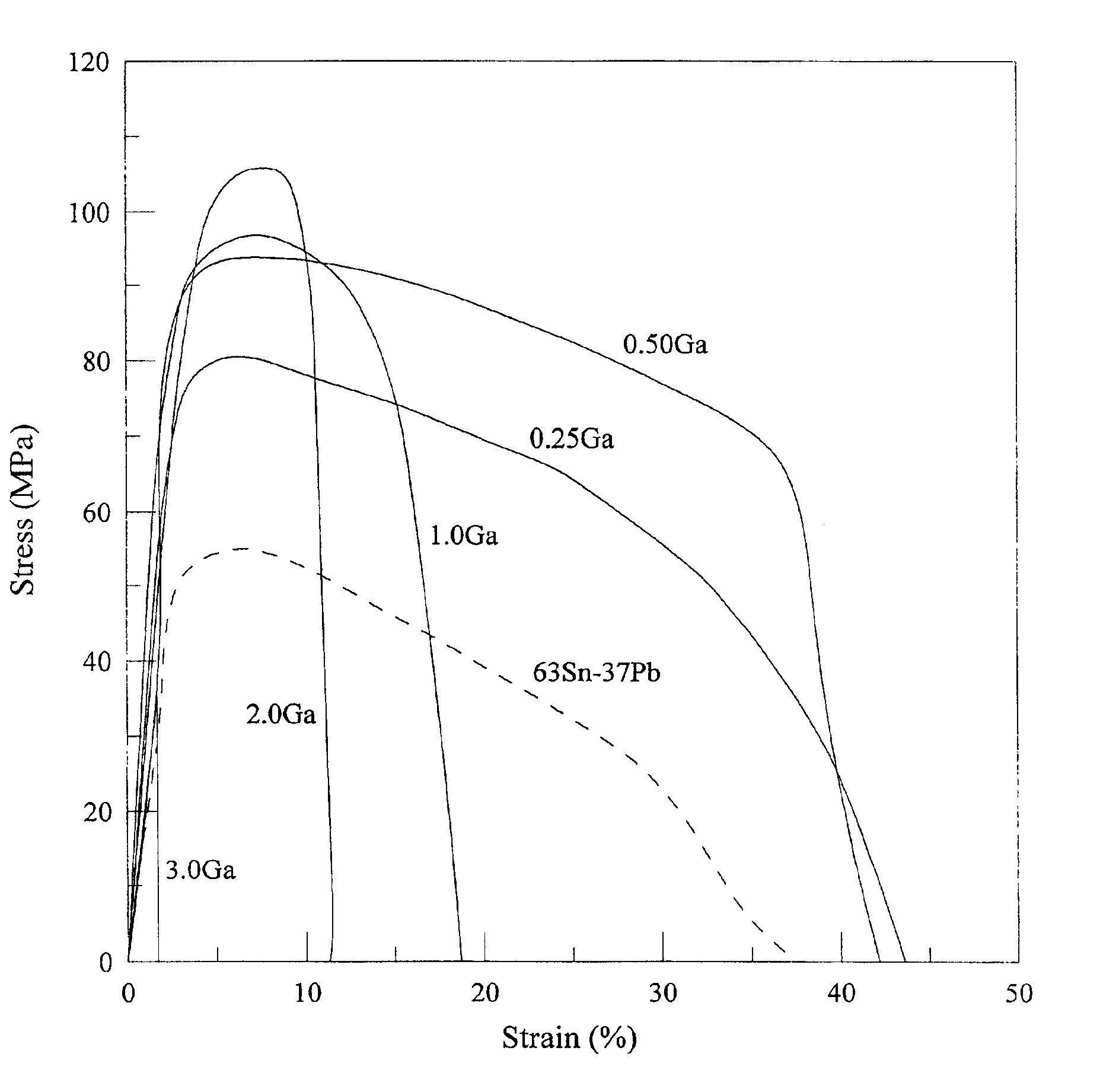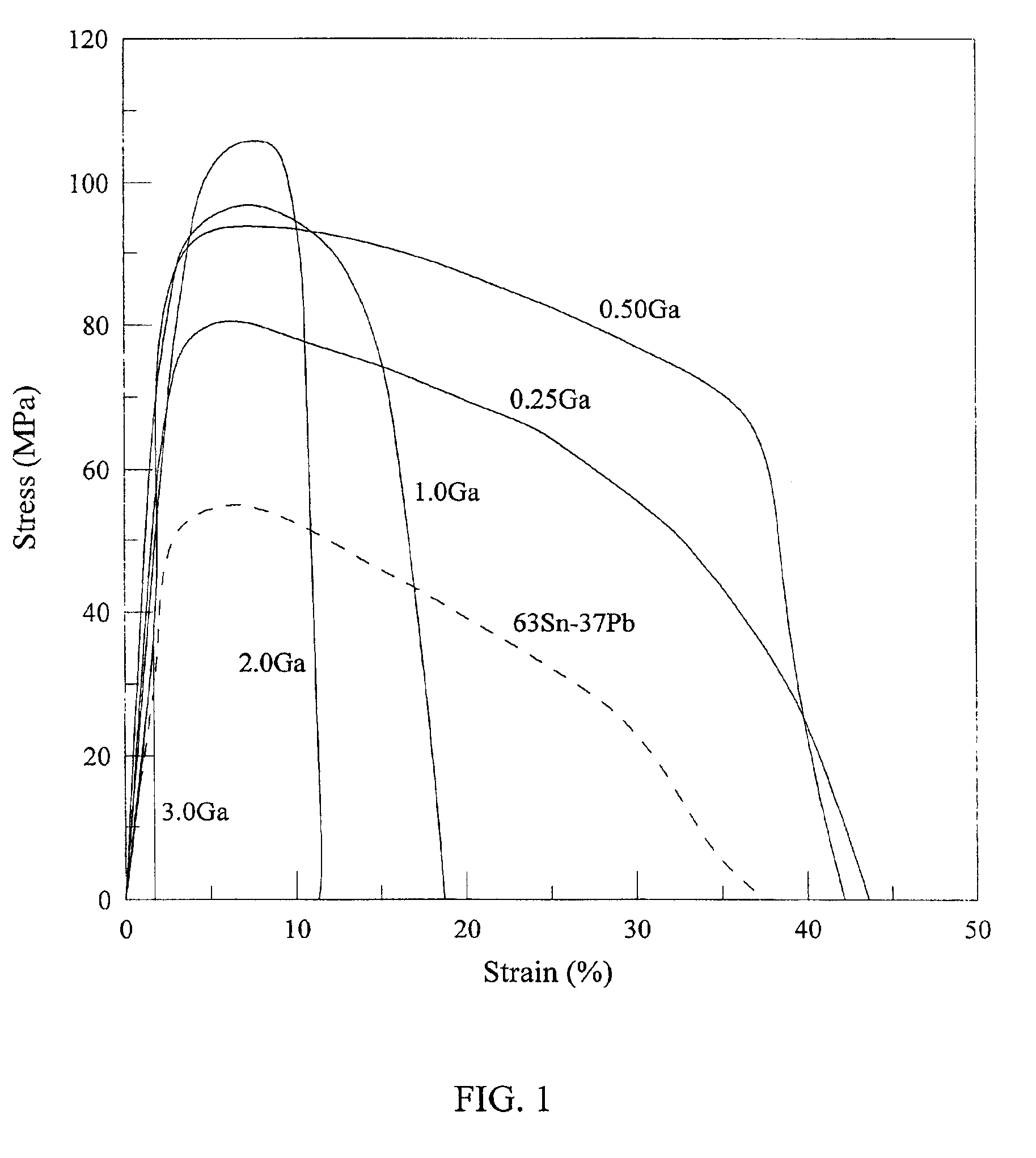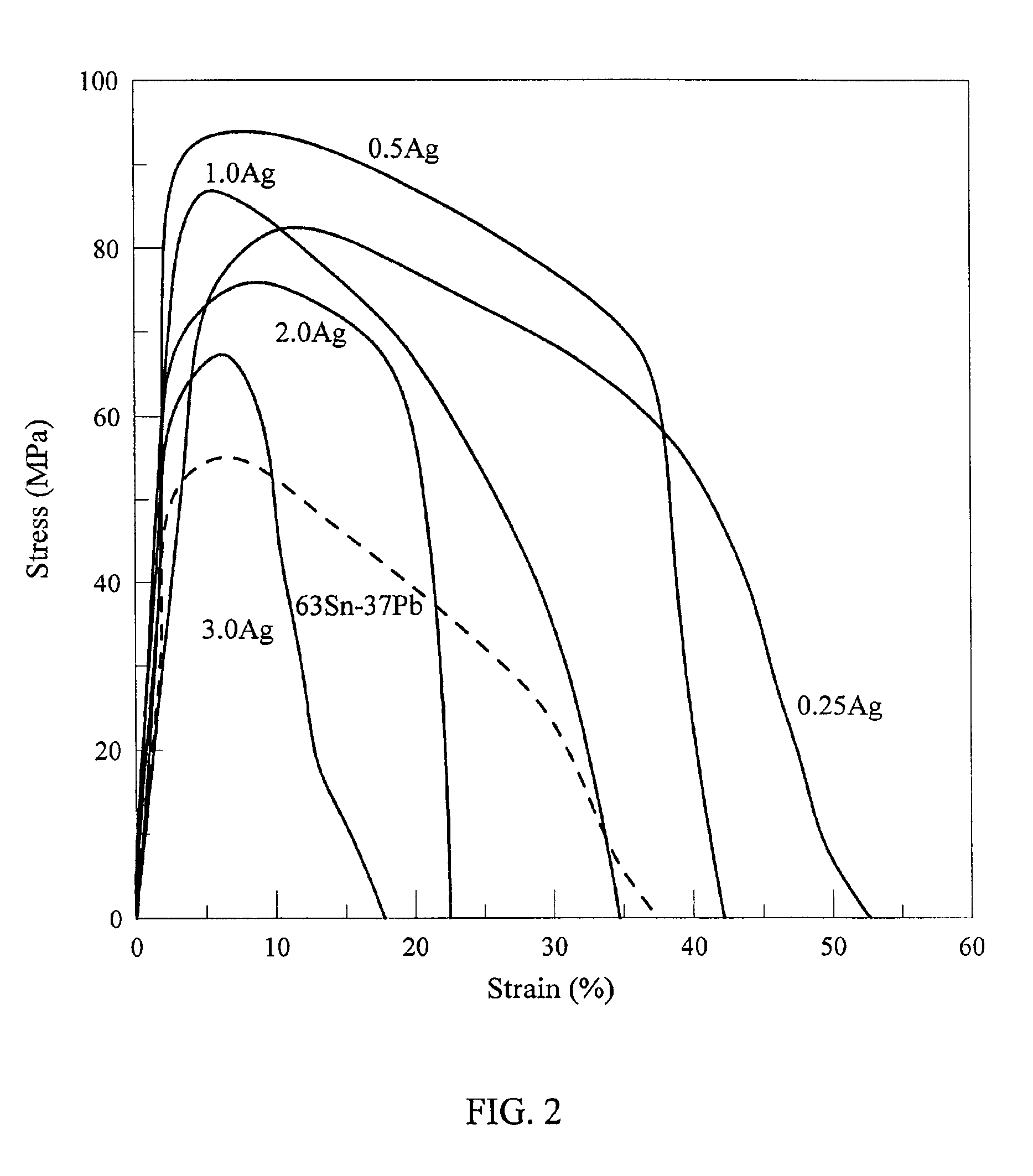Lead-free solder
a technology of lead-free solder and soldering ring, which is applied in the direction of welding/cutting media/materials, welding apparatus, manufacturing tools, etc., can solve the problems of increased facility cost, human body, environmental pollution, etc., and achieve the effect of low cos
- Summary
- Abstract
- Description
- Claims
- Application Information
AI Technical Summary
Benefits of technology
Problems solved by technology
Method used
Image
Examples
example 1
The preparation of the elongation test specimen of a Sn-8.55%Zn-1.0%Ag-zAl series solder alloy and the testing method thereof were the same as the control example. The results indicate that the addition of a small amount of Al (0.01˜0.45 wt %) greatly increases its wetting capability on a Cu based substrate. The experimental results indicate that, when heated to 250° C., the Sn-8.55%Zn-1%Ag-zAl series solder alloy has a wetting capability of about 0.75-1.20 mN under the aid of DMAHCI organic flux. This wetting capability is about one to two times the wetting capability of a Sn-9Zn eutectic solder alloy (˜0.41 mN). Regarding the wetting time, the wetting time of a Sn-8.55% Zn-1% Ag-zAl series solder alloy is about 0.9˜1.1 seconds which is much better than the wetting time of a Sn—Zn eutectic series solder alloy (˜1.32 seconds).
example 2
The preparation of the elongation test specimen of a Sn-8.55% Zn-0.45% Al-0.5% Ag-0.25% Ga alloy and the testing method thereof were the same as the control example. The results indicate that: the ultimate tensile strength (UTS) is 80.4 MPa which is about 46% higher than the tensile strength of a 63Sn-37Pb alloy; the elongation is 43.6% which is about 16% higher than the elongation of a 63Sn-37Pb alloy. The melting point of the alloy is 195.55° C. which is very close to the melting point of a 63Sn-37 Pb (183.5° C.).
example 3
The preparation of the elongation test specimen of a Sn-8.55% Zn-0.45% Al-0.5% Ag-0.5% Ga alloy and the testing method thereof were the same as the control example. The results indicate that: the ultimate tensile strength (UTS) is 92.5 MPa which is about 68% higher than the tensile strength of a 63Sn-37Pb alloy; the elongation is 42.2% which is about 12% higher than the elongation of a 63Sn-37Pb alloy. The melting point of the alloy is 194.7° C.
A stress-strain curve of a Sn-8.55Zn-0.45Al-0.5Ag-yGa solder alloy was obtained by repeating the steps of Example 2 and Example 3, as shown in FIG. 1. FIG. 1 also shows the stress-strain curve of a 63Sn-37Pb alloy of the control example.
PUM
| Property | Measurement | Unit |
|---|---|---|
| melting point | aaaaa | aaaaa |
| melting point | aaaaa | aaaaa |
| melting point | aaaaa | aaaaa |
Abstract
Description
Claims
Application Information
 Login to View More
Login to View More - R&D
- Intellectual Property
- Life Sciences
- Materials
- Tech Scout
- Unparalleled Data Quality
- Higher Quality Content
- 60% Fewer Hallucinations
Browse by: Latest US Patents, China's latest patents, Technical Efficacy Thesaurus, Application Domain, Technology Topic, Popular Technical Reports.
© 2025 PatSnap. All rights reserved.Legal|Privacy policy|Modern Slavery Act Transparency Statement|Sitemap|About US| Contact US: help@patsnap.com



